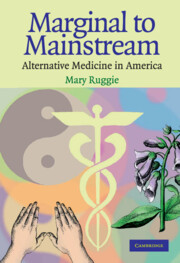Book contents
- Frontmatter
- Contents
- List of Tables
- List of Acronyms
- Preface
- 1 Introducing CAM … and the Many Questions It Raises
- 2 Understanding CAM: The Problem of Knowledge and the Power of Words
- 3 The Growth of CAM: Patterns of Use and Meaning
- 4 Physicians: Learning New Ways
- 5 Medical Research: Science and Interpretation
- 6 Investigating CAM: What Works?
- 7 The Road Ahead: Accommodation or Integration?
- Bibliography
- Index
2 - Understanding CAM: The Problem of Knowledge and the Power of Words
Published online by Cambridge University Press: 05 June 2012
- Frontmatter
- Contents
- List of Tables
- List of Acronyms
- Preface
- 1 Introducing CAM … and the Many Questions It Raises
- 2 Understanding CAM: The Problem of Knowledge and the Power of Words
- 3 The Growth of CAM: Patterns of Use and Meaning
- 4 Physicians: Learning New Ways
- 5 Medical Research: Science and Interpretation
- 6 Investigating CAM: What Works?
- 7 The Road Ahead: Accommodation or Integration?
- Bibliography
- Index
Summary
Many of the therapies housed under the rubric of CAM are not new in the United States. In the 19th century and into the early years of the 20th century, practices that we would now consider alternative flourished. Some of these therapies have persisted, and some, such as osteopathy and chiropractic, have even been legitimized by the courts. However, the present practice of these two modalities barely resembles their common roots in bone setting. Other therapies – nostrums and secret potions, exorcism, and mesmerism – fell out of favor long ago. The same is true of medicine. Certain centuries-old methods of diagnosis and treatment used by medical professionals have also experienced lasting value, whereas others have not withstood the test of time. Physicians still examine a patient's temperature to ascertain the presence of infection. They no longer, however, subject patients to bloodletting, purging with calomel, or dosing with strychnine (the latter for post surgery patients), to name a few.
Despite these similarities, the course of alternative medicine and its place in American health care diverged widely from that of conventional medicine as the 20th century progressed. In becoming alternative, these practices also became ostracized. They were no longer part of “regular” medicine because their practitioners were not trained as physicians and their practices were not based on science, which had gradually come to inform the practice of medicine. As the status of medicine advanced, alternative practices seemed to disappear.
Information
- Type
- Chapter
- Information
- Marginal to MainstreamAlternative Medicine in America, pp. 19 - 42Publisher: Cambridge University PressPrint publication year: 2004
Accessibility standard: Unknown
Why this information is here
This section outlines the accessibility features of this content - including support for screen readers, full keyboard navigation and high-contrast display options. This may not be relevant for you.Accessibility Information
- 1
- Cited by
